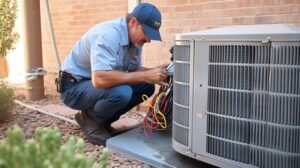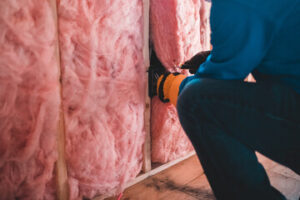Whether you’re starting your own truck from scratch or adding a mobile element to your restaurant, planning is key. A well thought out design will ensure that your truck is a hit with customers.

Pittsburgh Food Trucks are significant components of the street food industry, serving millions of people around the world. Their historical predecessors include horse-drawn chuckwagons and lunch wagons that traveled to worksites, catering mainly to blue-collar workers.
A food truck is a mobile kitchen that serves customers in public locations such as parks, events, and street corners. They are typically designed as modified vehicles or trailers, equipped with cooking facilities and storage space for ingredients and supplies. Food trucks offer a limited menu of popular and affordable items such as tacos, burgers, and sandwiches. Many also sell drinks and desserts.
Typically, food trucks prepare their dishes on-board, though some have external catering kitchens and reheat prepared foods brought from their brick-and-mortar restaurant. They also need a range of equipment and supplies, including cooking appliances, refrigeration units, sinks, cleaning products, tools, garbage and recycling containers, and a point-of-sale system to accept orders and payments.
Food trucks are popular for all meals of the day. Breakfast trucks serve quick, on-the-go meals such as breakfast burritos and pastries, while lunch and dinner trucks tend to feature gourmet cuisine such as artisanal burgers and fusion dishes.
The low startup costs, flexibility, and high customer retention potential of a food truck make it an increasingly popular option for entrepreneurs looking to enter the restaurant business. However, there are several important considerations to keep in mind before starting a food truck business, such as local competition and the food truck industry in your area.
Before you start a food truck business, research the competitive landscape in your area. Look at your town’s restaurant scene, as well as national food truck trends, to determine whether there is a market for your idea. Once you’ve identified your target market, you can begin developing your concept and plan for your business. You’ll also need to decide whether you want to rent or buy a truck, as well as how much to invest in it.
How to Start a Food Truck Business
A successful food truck business is founded on a strong concept, an appealing menu and a solid marketing strategy. Research your competitors, what sets them apart and how they market themselves. Use this information to help you design your own unique food truck and identify the target audience for your business.
Before you open your doors, conduct a SWOT analysis to determine your strengths, weaknesses, opportunities and threats. This will give you a clearer picture of your competitive landscape and enable you to create a stronger business plan, according to Kaye.
The next step is securing funding for your business. This could include savings, a business loan or even crowdfunding. You’ll also need to select a vehicle and set up a kitchen that meets health department requirements. If you don’t have enough space to handle your cooking equipment inside your food truck, it may be necessary to find a commissary service to allow you to prepare and store foods off site.
An EIN is a crucial part of starting any small business and can be used to separate your personal finances from those of your food truck business. It can also be helpful in establishing vendor relationships, as some wholesalers and suppliers will require an EIN before granting credit terms.
Because a food truck’s location can change on a daily basis, it is important to establish an online presence or other means of keeping customers updated. Additionally, you’ll need to have a fast and reliable payment system that allows you to accept multiple forms of payments. There are a number of food truck point-of-sale (POS) systems available that can streamline your operations and allow you to accept credit card payments, track inventory, manage loyalty programs and more.
Licenses & Permits
A food truck business requires a variety of permits and licenses. These vary by locality, but are often required to ensure your business follows all health and safety regulations. For example, a commissary kitchen permit is necessary for many mobile restaurants to allow them to wash dishes in an approved facility and keep their food prep space up to code. Other required permits may include a seller’s permit (to avoid paying sales tax) and zoning or parking permits. It’s also helpful to have a clearly defined business plan before starting the application process; this will help you articulate your company’s goals, market, and unique selling points.
A commercial driver’s license is generally required for drivers of trucks that weigh 26,001 pounds or more. The driver’s name, a full color photograph, birth date, sex and height must be clearly displayed on the license. The driver’s license must also be signed by the driver with the state name and a notary seal, and include the class of vehicle, air brake restrictions and endorsements (such as the ability to drive school buses).
It is also wise to check with your local board of health and any applicable city regulations before beginning the permit application process. This will give you a good idea of what equipment you will need to buy to meet your local food service requirements, such as a portable sink, refrigeration units, and cooking stations. You will also need a Point of Sale (POS) system to manage orders and payments.
In addition to your licenses and permits, you will need a legal structure for your business, such as a corporation or LLC. You will also need a Doing Business As (DBA) name and a state sales tax permit. The fastest way to find these is through your state’s or county’s website, but make sure you are on an official government site — the URL should end in “.gov.”
Insurance
Food Trucks are becoming the wave of the future, and as such they pose unique business risks that need to be addressed with the right insurance coverage. Depending on the size of the food truck and the amount of equipment it contains, a business owner may need more than one policy to cover everything from property and liability to workers’ compensation.
Unlike a traditional restaurant, food trucks are often mobile and their location can vary from day to day. This can leave them vulnerable to driving-related risks such as accidents and theft. In addition, their compact working space can make injuries more likely. Having the right commercial insurance can help reduce these and other risks, and provide protection for your investment.
In order to operate a food truck, most states require general liability and commercial auto insurance. Additionally, some venues where you plan to park will ask for proof of insurance before letting you set up shop. In these cases, you’ll need a certificate of insurance (COI), which is usually a one-page document showing that you have active insurance coverage.
Some insurance providers offer a single package policy specifically designed with the needs of food vendors in mind. This can include the core policies needed to run a food truck business along with additional endorsements like inland marine and food spoilage coverage.
You can obtain quotes for your food truck business from an insurance agent, an insurance broker, or directly via a provider’s website. When choosing an insurer, take the time to research different providers and policies. Getting multiple quotes can help you compare rates and find the best options to fit your business.
Purchasing a Food Truck
The food truck business is an exciting and unique opportunity to be your own boss and share your passion for great cuisine with the world. However, it’s not without its challenges. It requires a sizable upfront investment and a thorough assessment of your financial situation and competitors before making any decisions.
In addition to the initial costs of the food truck itself, there are many other startup expenses such as permits, insurance, branding and wrapping, equipment, inventory and more. To ensure you have a successful food truck, it’s important to focus on menu design and planning. Keep the number of items to a minimum and ensure that your selection is both high-quality and diverse enough to attract a wide variety of customers.
Before making a decision to buy a food truck, you should thoroughly research the industry and visit several trucks. Regardless of whether you decide to purchase a new or used truck, make sure you bring someone with food truck expertise along to do a detailed inspection of the vehicle. They should be able to identify and assess any potential problems with the truck and provide cost estimates for repairs.
It’s also worth considering if it makes more sense to start with a rented or purchased truck. If you choose to rent, your initial investment will be low and you’ll have the freedom to modify the truck to suit your needs as you grow. If you opt to purchase, however, you’ll need to factor in additional external costs such as loan repayments.


